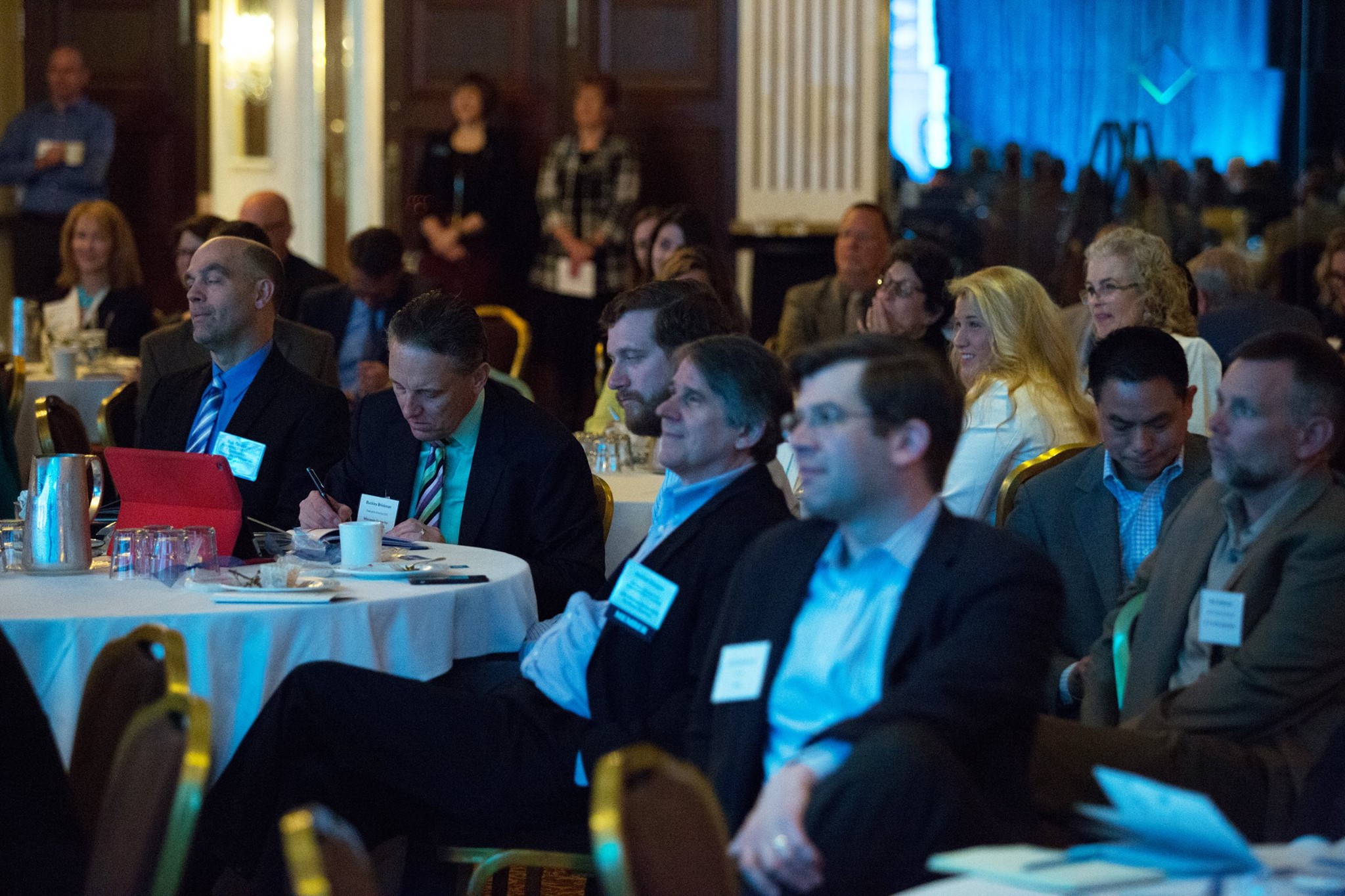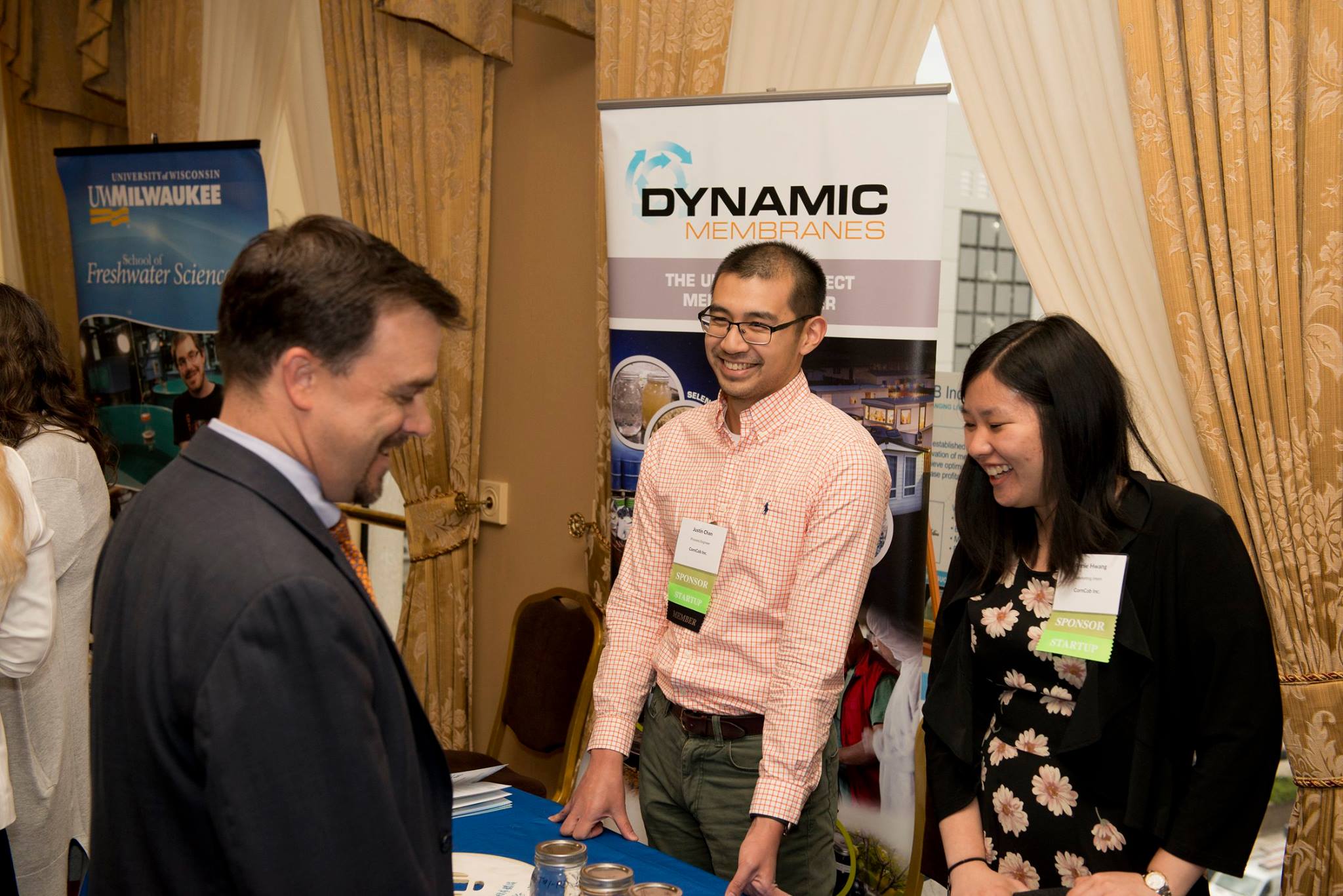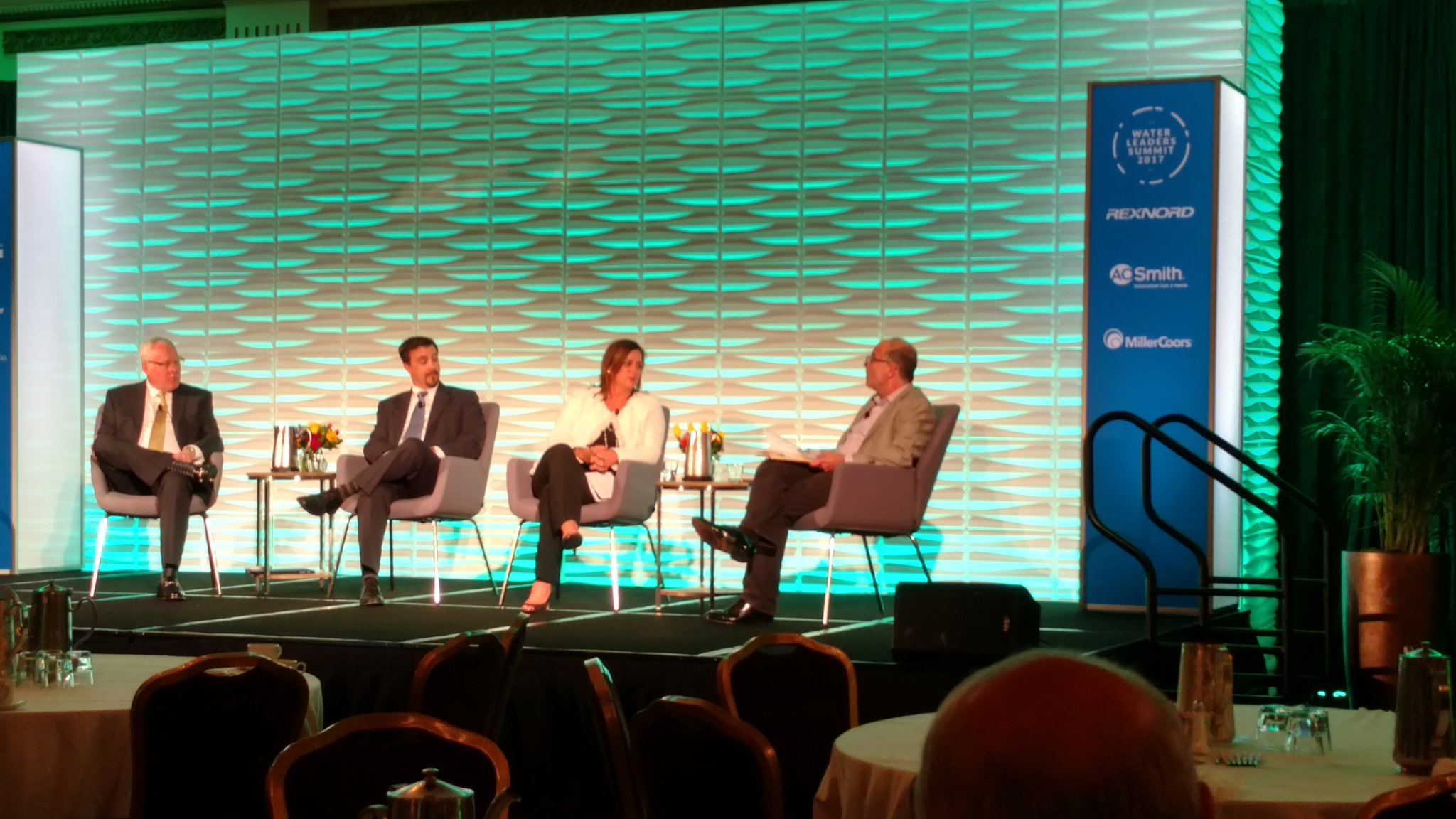Water is the new key to security
I just had the privilege of attending and leading a panel at the 10th annual Global Water Leaders Summit held in Milwaukee on May 23 & 24th. This year’s big idea, “A Secure Future Needs Water,” brought together thought leaders at the heart of water security strategy. This was my first opportunity to join the gathering, which was attended by more than 200 people from all walks of the water industry, including large industrial firms, policy makers, technologists, academics and industry consultants. There was a nice balance of powerful moderated panel discussions, informal discussions with very interesting and rich viewpoints, and vendors with a diverse array of services and products.
My official role was to lead an innovation panel that showcased two fantastic young entrepreneurs, (see their firms here and here) and unpack how their work intersected with the main conference theme of water security. We had a dynamic discussion of the challenges of being an entrepreneur in the water space (think high regulation and slow adoption rates), as well as how their work in IoT and point-of-use water conditioning brings transparency and empowerment to the consumer who is then able to make more informed choices. We wrapped up with the shift they both hope to bring to the conversation of how to make global access to clean water possible.
Here are my top 10 takeaways from the two days:
 The re-use business is exploding. Underscored by Snehal Desai and Emilio Tenuta, the new target for facility water use is zero net new water for large public and private facilities. Harnessing this technology provides pathways for the growth of firms globally (that otherwise would have been capped by regulations), and has become a surrogate for good business practice.
The re-use business is exploding. Underscored by Snehal Desai and Emilio Tenuta, the new target for facility water use is zero net new water for large public and private facilities. Harnessing this technology provides pathways for the growth of firms globally (that otherwise would have been capped by regulations), and has become a surrogate for good business practice.- Water problems are not “me” problems…they are “us” problems. You cannot fix water problems without a sense of community. The creation and supply of water used to be a lowest cost game: people who run the utilities are dialed into providing their constituents with the lowest possible cost. In the new view of water as a scarce resource, it has become very important for the dialogue to shift to a sustainable supply first, followed by cost second.
- Water issues are surrogates for government issues. It’s actually a corollary of the above that when there are deeply entrenched water issues, those serving as designers to create and divide public assets have failed their constituencies. The tricky bit is how the size of the group is worked out: see points 1 & 2 above.
- Only 1/10th of the world has 24×7 drinkable water on demand. Best-selling authors, Seth Siegal and Charles Fishman provided a rich global perspective based on their in-depth research. A surprising percentage of the world lives with intermittent or low-quality water that is either supplied according to a regulated schedule (i.e, water in Mexico is switched off over the weekend), or through a patchwork of local resources (i.e., India).
The US has made progress on usage. The US has moved from 100 gallons a day per person to 89 gallons per day in the last 15 years, and that has allowed growth in areas like the desert southwest without increasing consumption. In many cases, industrial consumers are meeting their expansion needs with zero net new water.- We need better information on where we are using water in industry. Measurement and tracking of internal industrial usage within the enterprise is the next frontier in water utilization improvement. Andrew Hobbs of Ford shared a remarkable body of work that has reduced the amount of water it takes to build a car by over 70% based on major changes in their plants and a substantial change to their painting processes. To make further progress, he shared that they will need to know much more about how much is consumed within the walls of each plant.
- Water is at the root of many regional and international political conflicts. It can also be a huge tool of conflict resolution. Key examples that were discussed include the Arizona area, Atlanta area, Iran and Israel/Jordan. We had first-person accounts of the amazing negotiation journey from people such as Kathleen Ferris, Uri Shani, Lisa Downes and Stephen O’Day.
 Having a real action plan for disruption is key. Brad Ives reported a journey of interruption for the entire university of North Carolina Chapel Hill campus and hospital. You’ll find more on that here.
Having a real action plan for disruption is key. Brad Ives reported a journey of interruption for the entire university of North Carolina Chapel Hill campus and hospital. You’ll find more on that here.- Many incentives are inverted and conflicted. Low-cost water has led to high usage, and there is a perverse incentive for each regional participant to not conserve prior to coming to the negotiating table, since they want to have a large starting position to anchor the negotiations to a higher absolute number. Nearly every major urban center could find 30% reduction on conservation alone.
- Water security demands both cyber security and physical asset security. Caitlin Durkovich, Tom Kuczynski and Kevin Morley participated in a panel that was equal parts scary and insightful. Rarely included in water conferences, the panel nicely put into perspective the uphill challenge for water infrastructure. There are two major networks: the control side, commonly termed SCADA, and the business operations network. The security of the physical assets is scary enough, but when we allow employees remote connections to the operations via broadband, we have just opened the “fences” to infinite global dimensions. The consensus of the panel is that if a bad actor wants control of your assets, they will find a vulnerability. The role of the operations team becomes that of fast follower emphasizing, agility and response
The conference was ably facilitated by Charles Fishman as a series of lively, in depth conversations. The format was single room, and very conversational – no long Power Points allowed. Rich Meeusen, CEO of Badger Meter, MC’d the event with wit and operational efficiency. This is not easy to do, so congrats the The Water Council for doing it well.
If you’d like to talk about the intersection between technical & business model changes in water space, please give me a call at 847-651-1014, or click here and set up a no strings attached, 20-minute phone call.
Related posts you can benefit from…


